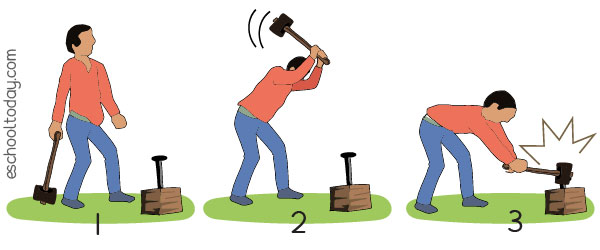- Kinds of energy
What is Mechanical Energy?
Mechanical energy is often confused with Kinetic and Potential Energy. We will try to make it very easy to understand and know the difference. Before that, we need to understand the word ‘Work’.
‘Work’ is done when a force acts on an object to cause it to move, change shape, displace, or do something physical. For example, if you push a door open for your pet dog to walk in, work is done on the door (by causing it to open). But what kind of force caused the door to open? Here is where Mechanical Energy comes in.
Mechanical energy is the sum of kinetic and potential energy in an object used to do work. In other words, it is energy in an object due to its motion or position, or both.
In the ‘open door’ example, notice what happens:
- You possess potential chemical energy (energy stored in you), and by lifting your hands to push the door, your action also had kinetic energy (energy in the motion of your hands).
- By pushing the door, your potential and kinetic energy were transferred into mechanical energy, which caused work to be done (door opened).
- Here, the door gained mechanical energy, which caused the door to be displaced temporarily.
- Note that for work to be done, an object has to supply a force for another object to be displaced.
Here is another example of a boy with an iron hammer and nail.

- In the illustration above, the iron hammer on its own has no kinetic energy, but it has some potential energy (because of its weight).
- To drive a nail into the piece of wood (which is work), he has to lift the iron hammer (this increases its potential energy because of its high position).
- And force it to move at great speed downwards (now has kinetic energy) to hit the nail.
The sum of the potential and kinetic energy that the hammer acquired to drive in the nail is called the Mechanical energy, which resulted in the work done.
